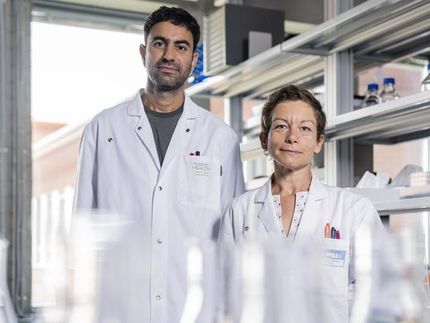Toxoplasmosis: pathogen with molecular master key
Parasitologists have shown that a complex of two protein variants plays a significant role in toxoplasmosis infection.
Advertisement
One of the most widespread zoonoses worldwide, toxoplasmosis is an infectious disease that is caused by the parasite Toxoplasma gondii. Although cats are the final host, the parasite can infest any warm-blooded animal, including humans. In an investigation of how the pathogen manages to infect such a broad range of hosts, a team led by Prof. Markus Meissner, Chair of Experimental Parasitology at LMU, has identified a central protein complex.

Toxoplasmosis: pathogen with molecular master key (symbolic image).
Computer-generated image
Toxoplasma belongs to a phylum of unicellular parasites known as Apicomplexa. In contrast to Toxoplasma, most species in this group are restricted to specific hosts and cell types. The malaria pathogen Plasmodium, for example, is very species-specific and can infect only liver cells and red blood cells. In the view of the scientists, the broad host range of Toxoplasma suggests that the parasite can recognize multiple structures of the host cell, leading to the activation of a central invasion complex.
“Our hypothesis was that this invasion complex is strongly conserved and present both in Toxoplasma and in Plasmodium,” says Dr. Mirko Singer, lead author of the study. “To investigate the invasion mechanisms and possible reasons for the different host specificity, we compared the factors involved in the invasion of the host for Toxoplasma and Plasmodium.”
Interplay of two variants
In their analysis of the invasion factors, the researchers concentrated on a family of huge Cysteine Repeat Modular Proteins (CRMPs), which were already suspected of playing a role in the invasion. Plasmodium possesses four of these proteins, whereas Toxoplasma has just two. By means of various experiments, the scientists managed to demonstrate that there are two CRMP variants which interact in pairs – Variant A interacting with Variant B in each case. The entire complex is assembled within Toxoplasma and then moves to the surface of the parasite, where it initiates the invasion of the host cell. If one of the partners is removed, the parasite cannot penetrate its host cell – the complex thus functions as a central “master key” to access the host.
Furthermore, the scientists identified two additional little helper proteins in Toxoplasma that each bind specifically to one of the variants. “Without these helpers, it is harder for Toxoplasma to invade cells,” says Meissner. “Interestingly, they are absent in Plasmodium, which could explain Toxoplasma’s broader host range.”






















































